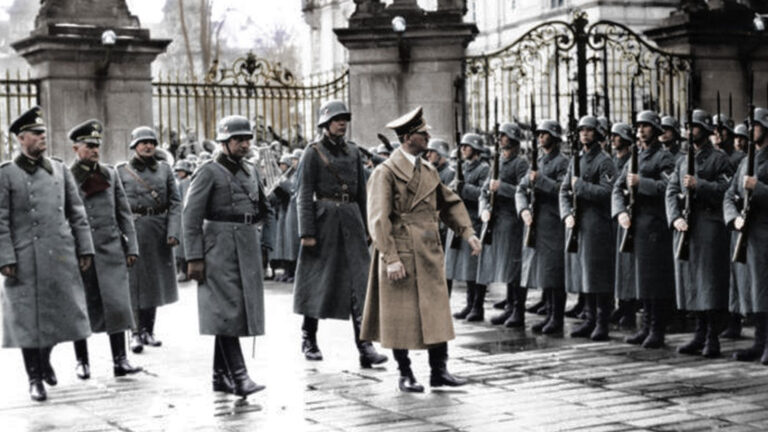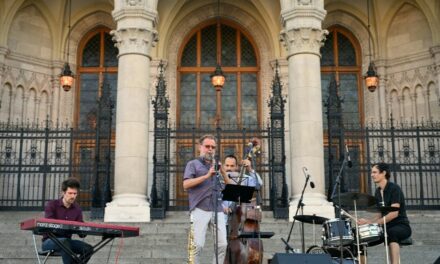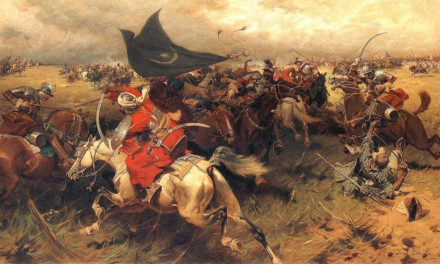In our reference to the past, this time we are reviving the "Night of the Long Knives", the reckoning that took place 90 years ago in the history of Nazi Germany.
Cleaning, settlement. There are probably many different versions of these expressions in people's minds based on different films and stories. However, the event that this article commemorates actually happened, not a figment of imagination. It is almost a textbook example of when a tyrant who fears his power does not shy away from removing his former allies and comrades from the road.
By the early 1930s, the far-right National Socialist German Workers' Party (NSDAP), better known as the Nazi Party, led by Adolf Hitler, became one of the most popular political forces in Germany.
Many factors played a role in the strengthening of Hitler's movement, such as the great economic crisis that began in 1929 and the accompanying unemployment, which actually laid the foundation for the rise of extreme political ideas - in addition to Nazism and communism - and the collapse of the Weimar Republic.
The crisis gradually sent the German economy, which was struggling to overcome hyperinflation, to the floor again, while unemployment exceeded 30 percent and the majority of the middle class was impoverished.
After 1930, under the reign of Imperial President Paul von Hindenburg, Germany was headed by conservative-led cabinets, which were successively led by Heinrich Brüning, Franz von Papen, and then Kurt von Schleicher as chancellors.
In the elections held in July 1932, the Nazi Party achieved a result of 37.4 percent, which made Adolf Hitler's party the political group with the strongest faction in the German parliament, the Reichstag.
He managed to achieve all this despite the fact that the two left-wing political forces, the communists and the social democrats, together had more representatives than the NSDAP. The KPD (Communist Party of Germany - ed.) , on the other hand, could not get together with another block on the left of the political spectrum due to the ban from Moscow.
With full power towards total domination
By 1933, the political situation in Germany had become increasingly untenable: violence by extremist groups raged in the streets, while the economy lay in ruins. President Paul von Hindenburg, former field marshal and German national hero, eventually succumbed to the increasingly unscrupulous demands of the Nazis and the pressure of the rich entrepreneurs of German big industry
On January 30, he appointed Adolf Hitler as Reich Chancellor.
Hindenburg saw in him the person who could put an end to street violence and get the economy back on its feet. On February 1, 1933, Hindenburg dissolved the Reichstag at Hitler's suggestion. Three days later, an emergency decree was also issued, in which the right to assemble and the freedom of the press were basically restricted.
A month later, on February 27, a fire broke out in the Reichstag building, and the Nazis immediately began to suspect the Communists of the arson. Allegedly, the arson was committed by a Dutch communist, Marinus van der Lubbe, who, although he was not affiliated with any party, was nevertheless disheartened by the situation of the working class. The young man wanted to protest against what he considered to be an undignified situation by setting fire to the building, inciting the workers to resist.
Based on this, the police started arresting communist, social democrat and trade union members one after the other. On February 28, Hitler had Hindenburg sign the decree that repealed basic human rights.
The Communist Party was then banned, and the first concentration camps were opened, where perceived or real opponents of the new regime were locked up.
Hitler did not do much after his appointment as chancellor, and in just a few months he gained full power and then built a total one-party system. However, the realization of his ideas was made difficult by the fact that he failed to win the trust of the army. There were several generals who did not think highly of the Austrian-born man who served as a corporal in World War I, and in addition, the existence of the Nazi paramilitary organization, the SA (Sturmabteilung - assault squad), was surrounded by suspicion, as many of the soldiers thought they discovered a new revolutionary army in it. .
Comrades become enemies, flashing knives
Mainly interested in intimidating political opponents and provoking street fights, the SA was headed by Ernst Röhm, one of Hitler's old comrades-in-arms. According to some sources, Röhm was the only one who could call the Führer by his first name, Adolf.
At the same time, Röhm took social demagoguery too seriously and was convinced that a second revolution was needed that would sweep the communists, the capitalists identified with the Jews, and the reactionary conservatives out of the way of the Nazis.
With these ideas, the SA leader - who also took part in the 1923 Munich Beer Putsch on Hitler's side - deeply angered the wealthy industrialists who supported the Führer in achieving his goals. But it wasn't just the industrialists who turned their noses up at the increasingly uncomfortable Röhm; through power struggles, all major Nazi party leaders believed that the SA leader, who had significant military experience, had gone too far.
Several of the leading figures of the NSDAP began to convince Hitler that Ernst Röhm wanted to carry out a coup against him with French money. The widely hated Gregor Strasser, who participated in the founding of the Nazi Party, was also implicated in the alleged conspiracy. Hitler decided to act only after the army issued an ultimatum to him to reduce the number of SA and limit its influence. Röhm openly opposed this.
Hitler finally chose June 30, 1934 as the date, when the entire leadership of the SA met in Bad Wiesee in Bavaria. The Führer secretly flew to the scene, and at four o'clock in the morning
personally arrested Ernst Röhm and the SA staff.
The other leaders of the organization were gathered at the train station upon their arrival. The detained SA members were then taken to a prison in Munich and most of them were executed within a short time. Röhm refused to commit suicide, and according to some sources he also stated:
if I have to die, let Adolf do it himself.
Ernst Röhm was finally shot dead on July 1, 1934 by two SS officers. The purge was not only limited to the brown shirts: Hitler also dealt with his old enemies and the conservative opposition at the same time. After Röhmek's arrest, he sent the Kolibri code to Berlin, and Hermann Göring ordered the execution squads of the SS (Schutzstaffel - protection squad), created by Hitler in the second half of the 1920s to counter the SA, to carry out their task.
In the next 48 hours, in addition to the leaders of the SA who were still free, several other people were executed based on a previously compiled list. Among them were Gregor Strassert, former chancellor Kurt von Schleicher, Gustav von Kahr, the smasher of the 1923 Munich Beer Putsch, and the secretary and close associate of Vice Chancellor Franz von Papen.
Franz von Papen, who helped appoint Hitler as chancellor, was only arrested for a short time, then, realizing the hopelessness of his own situation, he resigned from the vice-chancellorship, which he received after Hitler's appointment.
With the political purge that took place between June 30 and July 2, 1934, Adolf Hitler permanently consolidated his power, which was not threatened by anyone or anything in Germany. The army swore an oath of allegiance, the SA lost its importance and was replaced by the SS.
The propaganda directed by Joseph Göbbels spread after the events that Hitler had saved the country from chaos with the purge, adding that he had essentially eradicated homosexual practices. The homosexual orientation of several SA leaders was well known. Among them is Ernst Röhmé.
According to official statistics, 81 people were executed on the "Night of the Long Knives" - otherwise known as the Röhm coup, perhaps in Operation Hummingbird - but the real number could have been hundreds, in addition to more than a thousand people imprisoned.
Sources: Rubicon, Past History Magazine, The Night of the Long Knives – Hitler's Rise to Power documentary
Featured image: Wikipedia Commons












